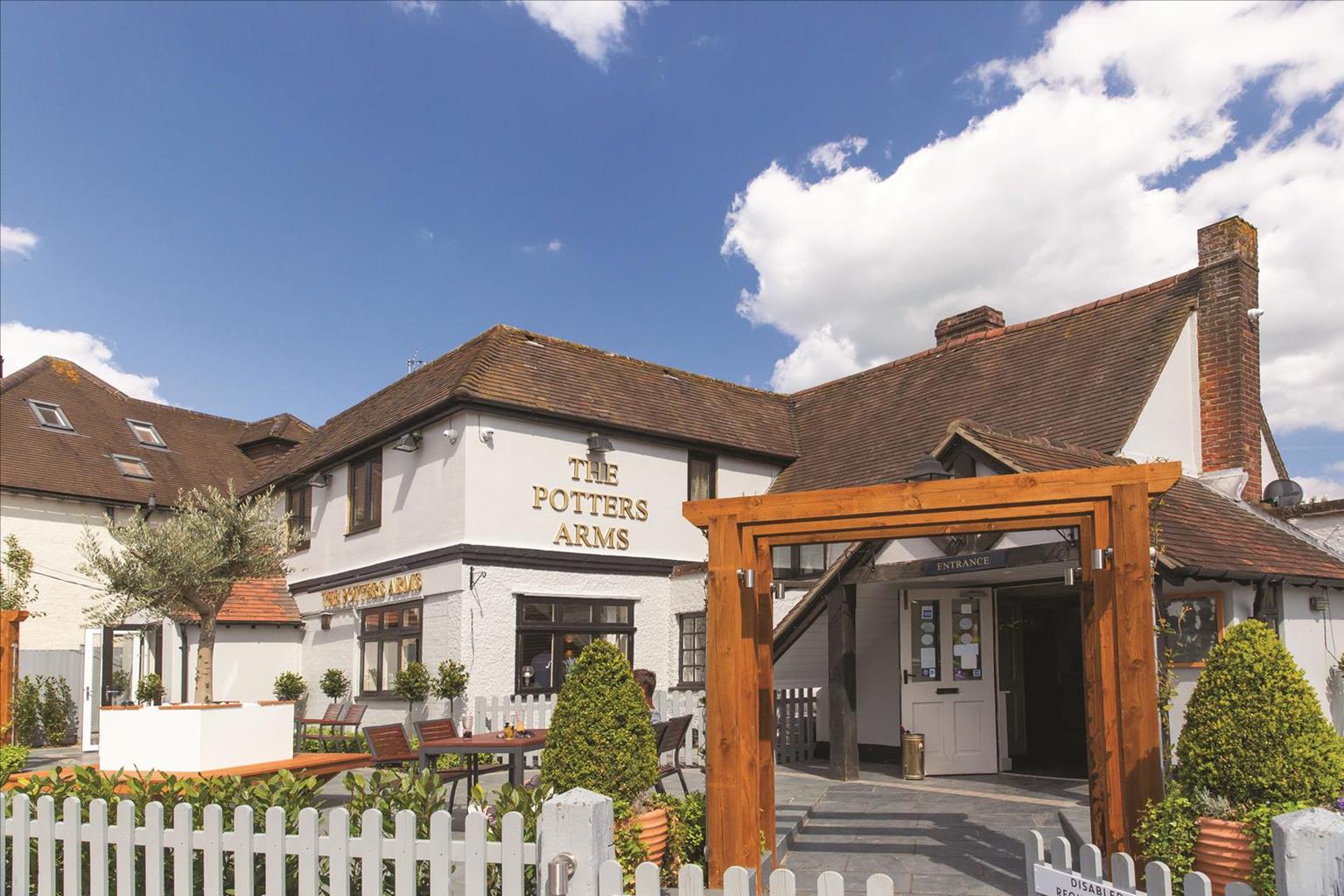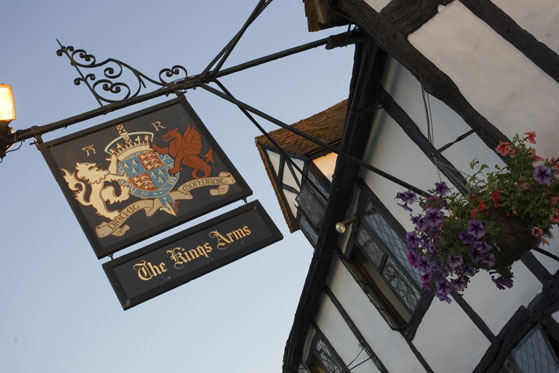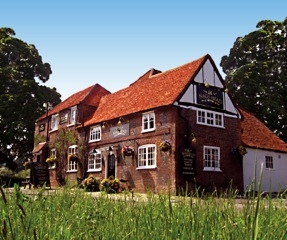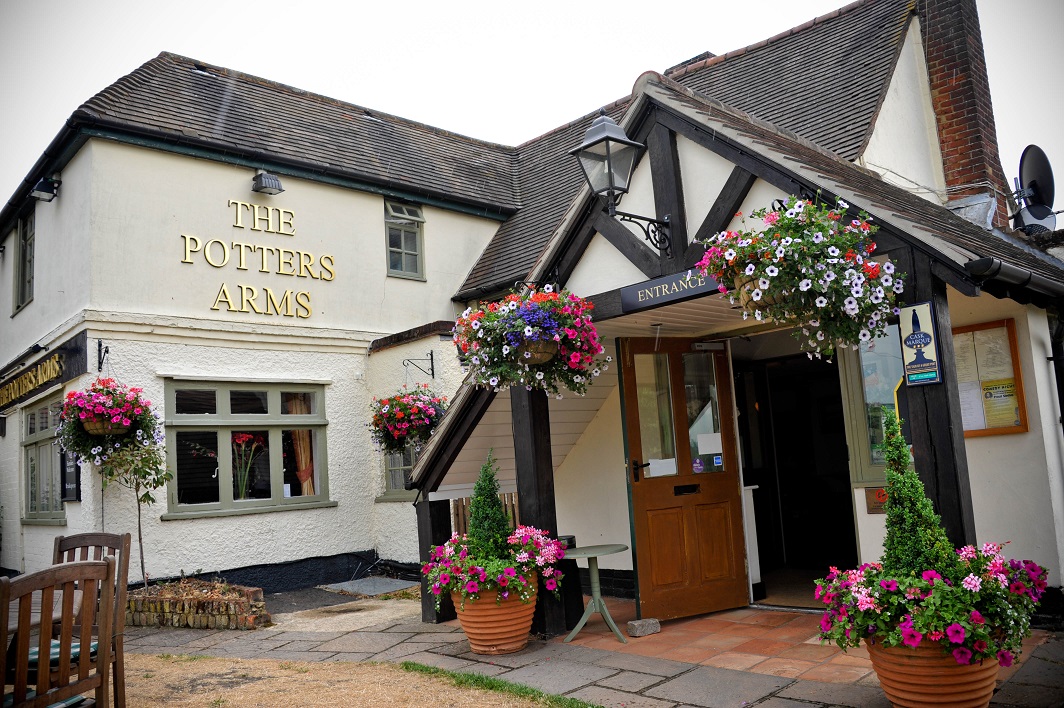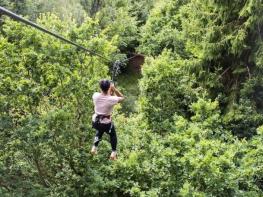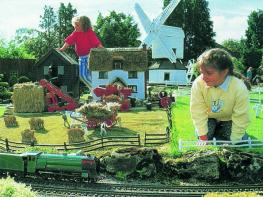This delightful 15th-century inn, located in the picturesque Chiltern Hills, has a great…
Following Roald Dahl at Great Missenden

4.25 miles (6.8kms)
About the walk
The pretty little village of Great Missenden has two claims to fame. Missenden Abbey, founded in 1133, served as a monastery for over 400 years until ruined in the Reformation. The ruins were later incorporated into a Georgian mansion, but this was gutted by fire in 1985. Now restored, it functions as a centre for conferences and adult education, and as a wedding and events venue. You can wander into its front entrance, enjoy the views and enquire at reception if the building is free to look around.
An author's inspiration
Its second claim to fame is as the home of one of the world's best-selling children's authors. Roald Dahl was born in Wales in 1916, to Norwegian parents, and served with distinction in the RAF during World War II. He wrote about his wartime adventures and his first book was published in 1942. His first children's book, The Gremlins, was published a year later. In 1954 he moved to Great Missenden and lived at Gipsy Cottage until his death in 1990. He used Angling Spring Wood as inspiration for Fantastic Mr Fox, and Atkins Wood in Danny the Champion of the World. With such classics as James and the Giant Peach, Charlie and the Chocolate Factory, Matilda, The Witches, The Twits, and The BFG to his name, he is regarded as one of the all-time great children’s storytellers. Dahl also contributed to the screenplays for two Ian Fleming novels, Chitty Chitty Bang Bang (creating the creepy 'Childcatcher' character) and You Only Live Twice. He also gained fame for his dark, often macabre, adult short stories, which often included a twist in the tale.
Great Missenden's High Street will be familiar to readers of Danny the Champion of the World, for the 'Red Pump Garage', featuring two splendid old petrol pumps ('Sorry, out of fuel ever since 8 gallons went over £1…'). And No. 70, Crown House, was the inspiration for Sophie’s 'norphanage' in The BFG. You can pay your respects to the author at the Church of St Peter and St Paul, where he is buried just below the memorial bench in the shade of the trees. In typical Dahl humour, note the concrete footprints of the BFG next to the author’s simple gravestone.
Walk directions
Exit the car park right, then turn left onto the High Street. Continue past the 'Red Pump Garage' and the Roald Dahl Museum and Story Centre to reach the George Inn. Take the alleyway on the right (signed 'BASDA and ART recruitment') immediately before it. At the end, turn left onto an unmade road, with the 400-year-old timbers of the rear of the George Inn to your left.
Soon turn left onto Twitchell Road. Turn right onto Whitefield Lane, which leads beneath the railway. Turn immediately right onto unmade Trafford Road (you may spot Gipsy House on your right), then turn left after 50yds (46m) onto a waymarked track. Pass a cemetery on the left. The gate ahead leads to open fields and woods. Go straight ahead, keeping the fence on your left, to a gate entering Angling Spring Wood.
Continue straight on through the wood. Leave it via a kissing gate and take the path straight ahead, bisecting a field, and emerging onto the road at Green Lane. Turn left, walk a few paces to Andlows Farm and turn left into here. After a few steps (before the farm buildings) turn sharp right at the corner of the hedge, and go through a gate with the farmhouse on the left. At the next gate turn left, still keeping the farmhouse to your left. You soon enter Atkins Wood.
The path forks and the broader trail leads right; take the less obvious path left, which keeps close to the left-hand perimeter of the beech wood. At the end of the wood go through a kissing gate and turn left onto a bridleway. This leads to a tarmac lane and on past the entrance to Angling Spring Farm. The lane bends right, but take the track left with a panoramic view from here towards Great Missenden. Continue ahead into Angling Spring Wood, following a steep path downhill. Veer right and rejoin the trail on which you entered the woods. Retrace your steps back via the railway tunnel and continue to the end of Whitefield Lane.
Turn right onto High Street and cross the road. After around 70yds (64m) is the entrance to Missenden Abbey. Continue straight on, and turn left at the waymarker through a kissing gate. Almost immediately on your left is a small humpback bridge which offers a great view of the abbey across Warren Water. Leave by another gate and continue on the path, leading uphill, to the right of the abbey. Go through a gate at the top of the field, ascend some steps and go straight ahead, crossing the bridge over the A413 to visit the church and graveyard.
Retrace your steps back to the bridge and go straight on, following Church Lane. Walk past two cottages, and turn right, then immediately left. Follow the road round to the left, with Oldham Hall and the school on your right. As the road ends, follow the footpath. This leads into the playing fields directly opposite Link Road car park – cross them to return to the start.
Additional information
Field paths, stretches of road, one flight of steps
Farmland, woods, pasture, and landscaped grounds and lake of Missenden Abbey
Under control across farmland and in wildlife conservation area
OS Explorer 181 Chiltern Hills North
Link Road car park
Link Road car park
WALKING IN SAFETY
Read our tips to look after yourself and the environment when following this walk.
Find out more
Also in the area
About the area
Discover Buckinghamshire
Buckinghamshire is a land of glorious beech trees, wide views and imposing country houses. Victorian Prime Minister Benjamin Disraeli savoured the peace and tranquillity of Hughenden Manor, while generations of statesmen have entertained world leaders at Chequers, the Prime Minister’s rural retreat. Stowe and Waddesdon Manor are fine examples of even grander houses, set amid sumptuous gardens and dignified parkland.
The Vale of Aylesbury is a vast playground for leisure seekers with around 1,000 miles (1,609km) of paths and tracks to explore. Rising above it are the Chiltern Hills, a designated Area of Outstanding Natural Beauty covering 308sq miles (798sq km). They are best appreciated in autumn, when the leaves turn from dark green to deep brown. In the southeast corner of the Chilterns lie the woodland rides of Burnham Beeches, another haven for ramblers and wildlife lovers. Although the county’s history is long and eventful, it’s also associated with events within living memory. At Bletchley Park, more than 10,000 people worked in complete secrecy to try and bring a swift conclusion to World War II. Further south, an otherwise unremarkable stretch of railway line was made infamous by the Great Train Robbery in the summer of 1963.
Nearby stays
Restaurants and Pubs
Nearby experiences
Recommended things to do
Why choose Rated Trips?
Your trusted guide to rated places across the UK
The best coverage
Discover more than 15,000 professionally rated places to stay, eat and visit from across the UK and Ireland.
Quality assured
Choose a place to stay safe in the knowledge that it has been expertly assessed by trained assessors.
Plan your next trip
Search by location or the type of place you're visiting to find your next ideal holiday experience.
Travel inspiration
Read our articles, city guides and recommended things to do for inspiration. We're here to help you explore the UK.




